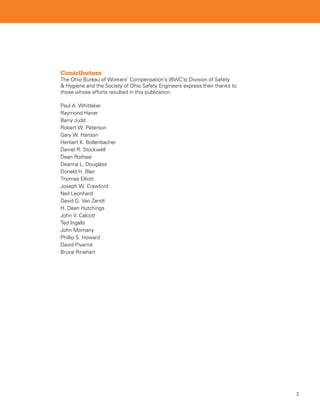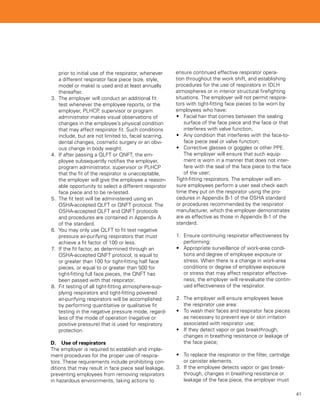This document provides a summary of key elements for establishing an effective workplace safety program, including:
1. Safety meetings are intended to discuss important safety and health information needed to prevent occupational injuries and illnesses. Meetings should involve supervisors and employees.
2. Accident investigations are fact-finding procedures used to identify causes of incidents in order to prevent recurrences. All injuries, no matter how minor, should be investigated.
3. When designing or modifying equipment, safety considerations are important from the earliest stages to avoid costly retrofits. New equipment must comply with regulations and incorporate necessary safeguards.


















































































